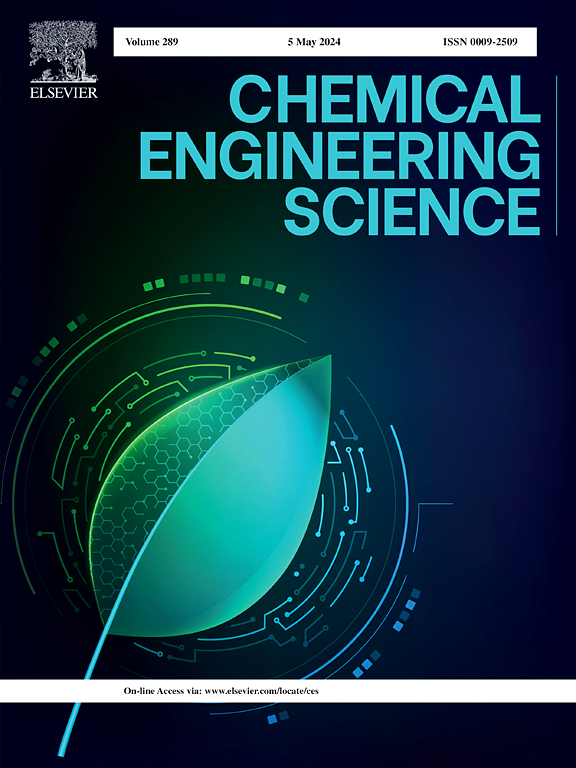CO2- h2o乳化液注入促进非密封海底沉积物中CO2注入和水合物转化以封存CO2水合物
IF 4.3
2区 工程技术
Q2 ENGINEERING, CHEMICAL
引用次数: 0
摘要
二氧化碳水合物为二氧化碳地质封存提供了一种重要的替代方案。然而,液态CO2的指指流动和水合物膜效应会严重限制流动CO2向水合物的转化。本文报道了一种通过注入CO2- h2o乳液增强CO2水合物封存的方法,并在三维体系中证明了其有效性。与液体注入相比,乳液注入具有更高的孔隙水驱替效率和更大的波及面积,最终使CO2固存密度提高了142%。高度分散的CO2微滴显著提高了CO2- h2o的接触能力,减弱了水合物膜效应,从而大大提高了水合物转化的速度和数量。不同含水量下,含水率为40%时CO2固存密度最高,为148 kg/m3,其中水合CO2占71.45%。CO2- h2o乳液的优异性能为CO2水合物的绿色高效封存提供了一条途径。本文章由计算机程序翻译,如有差异,请以英文原文为准。
Enhanced CO2 injection and hydrate conversion in unsealed submarine sediments for CO2 hydrate sequestration by CO2-H2O emulsion injection
CO2 hydrate provides an important alternative solution for CO2 geological sequestration. However, fingering flow of liquid CO2 and hydrate membrane effect can severely restrict flowing CO2 conversion to hydrate. Here we report an enhanced CO2 hydrate sequestration method via CO2-H2O emulsion injection, and its effectiveness has been proven in a three-dimensional system. Compared to liquid injection, emulsion injection demonstrated higher displacement efficiency of pore water and larger sweep area, finally increasing CO2 sequestration density by 142 %. The highly dispersed CO2 micro-droplets significantly increase CO2-H2O contact capability and weakens the hydrate membrane effect, thereby greatly increasing the rate and quantity of hydrate conversion. For different water contents, the highest CO2 sequestration density of 148 kg/m3 is achieved at 40 % water content, with hydrated CO2 accounting for 71.45 %. The excellent performance of CO2-H2O emulsion provides a green and high-efficient approach to CO2 hydrate sequestration.
求助全文
通过发布文献求助,成功后即可免费获取论文全文。
去求助
来源期刊

Chemical Engineering Science
工程技术-工程:化工
CiteScore
7.50
自引率
8.50%
发文量
1025
审稿时长
50 days
期刊介绍:
Chemical engineering enables the transformation of natural resources and energy into useful products for society. It draws on and applies natural sciences, mathematics and economics, and has developed fundamental engineering science that underpins the discipline.
Chemical Engineering Science (CES) has been publishing papers on the fundamentals of chemical engineering since 1951. CES is the platform where the most significant advances in the discipline have ever since been published. Chemical Engineering Science has accompanied and sustained chemical engineering through its development into the vibrant and broad scientific discipline it is today.
 求助内容:
求助内容: 应助结果提醒方式:
应助结果提醒方式:


